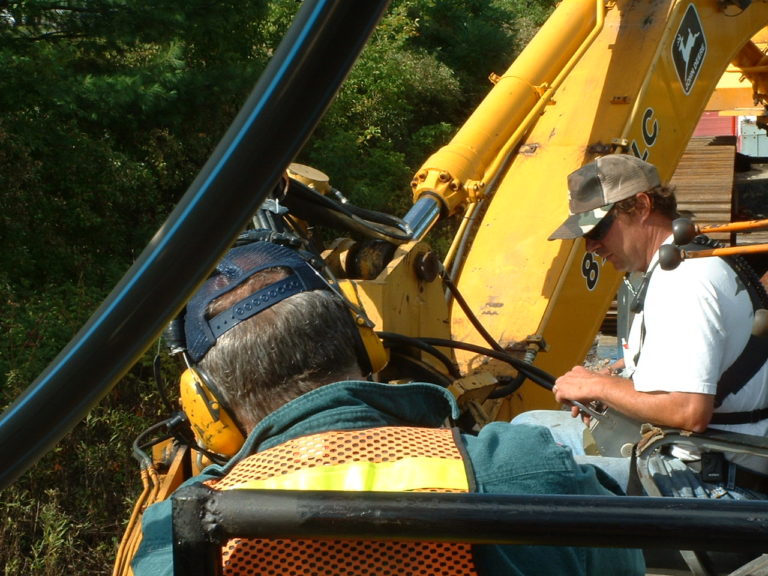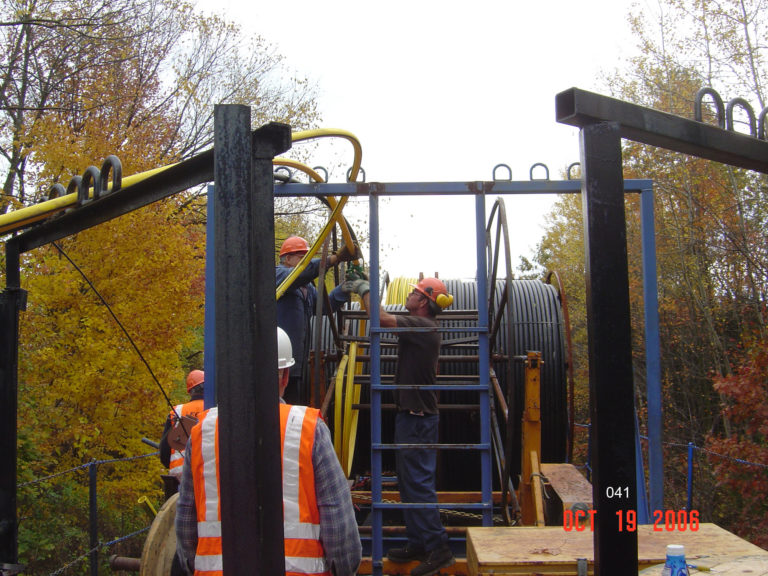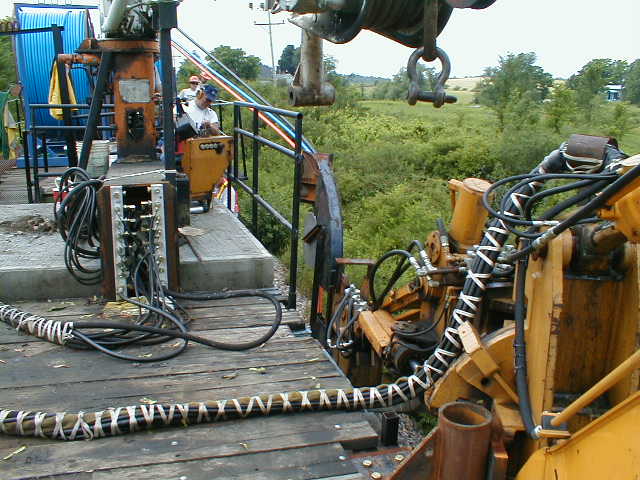
About ECI
THE RAIL PLOW STORY
Background
The year was 1998. Ken Pidgeon had just returned to the family construction business to join his father Alan and brother Scott. Ken had previously worked as a registered professional engineer at a geotechnical consulting firm in the Boston area.
First Challenge
One of the first challenges that Alan assigned to Ken was to develop a way to plow innerduct conduit along the New England Central Railroad. ECI had just been awarded a 96-mile-long project and ECI did not own a Rail Plow. ECI had about one month to come up with a design – and build it. The criteria was tough: two 1.25-inch-id innerduct, minimum depth 48 inches, two 3,000 hp diesel-electric locomotives for pulling power, and 96 miles of conduit to install before cold weather sets in.
Solution:
ECI had large track excavators and dozer plows. So, Ken reasoned, “why couldn’t we install a dozer plow attachment onto the end of an excavator boom.” The excavator provided the mass and structural capacity to weight down the plow and resist the huge pulling traction from the locomotive power. The excavator also provided a means to move the plow outward, inward, downward, and onto the rail car deck for travel.
Fabrication & Fitup:
Lots of fabrication, a hydraulic rotor attachment for the connection from the boom to the plow, additional ballast weight on the car, structural reinforcing of the car, tiedowns for the excavator, and we’re ready to go. The project was an interesting challenge for ECI’s mechanics and fabricators.
Would It Really Work?
Ken never doubted it, even after a major structural failure on the second day of production work. After 3 days of repair, the crew was back in production and didn’t look back. The biggest challenge was dealing with the heavy rains from one of the wettest summers on record.
Production was the Proof:
The average daily pay length production was about 10,500 feet. The rail plowing portion was complete in 40 nights (work was done on 10-hour night shifts to avoid train traffic). The single best night was nearly 20,000 linear feet. The project was a huge success for ECI, the client, and the railroad.
US Patent #6,193,440
Was the rail plow something that could be patented? Apparently the US Patent office thought so and awarded patent #6,193,440 to Ken and Alan Pidgeon.
Later Projects
The era of rail plow work had largely gone by at about the time that ECI built their Rail Plow. The dot.com bust occurred, the telecommunication industry changed considerably, and improvements in fiber optic technology meant that more data could be transmitted on less fiber. However, ECI’s Rail Plow was put into action for several other projects including railroad signal wire installation on the NECR, a fiber optic network from Whitehall, NY to Burlington, VT, a fiber ring around Chittenden County, VT, and a telecommunications project in Worcester, MA.












